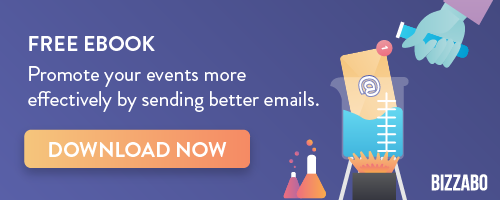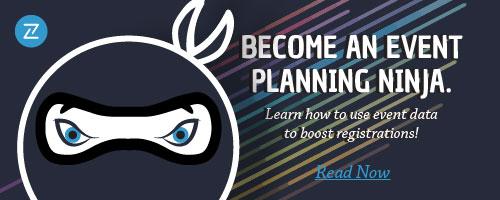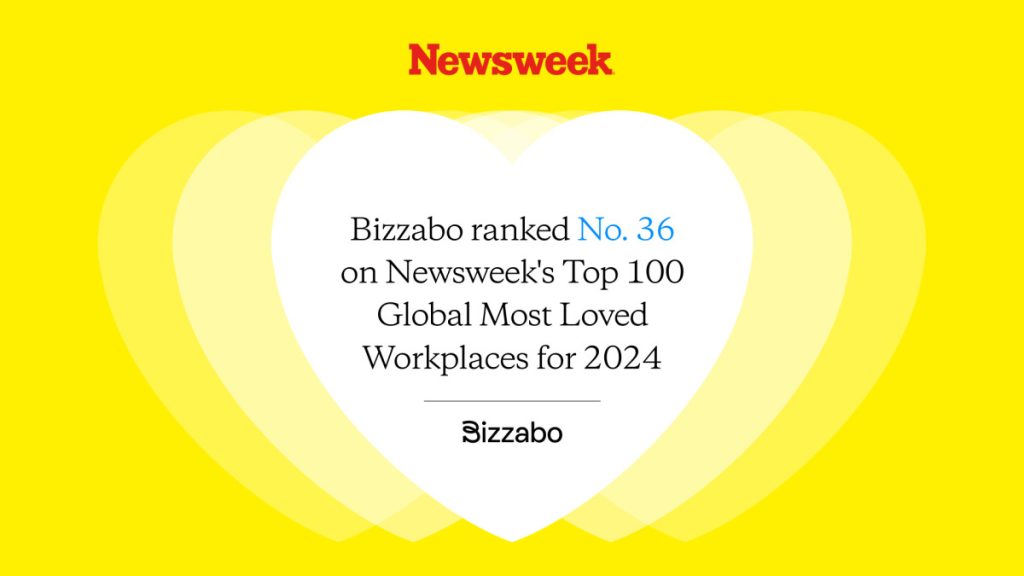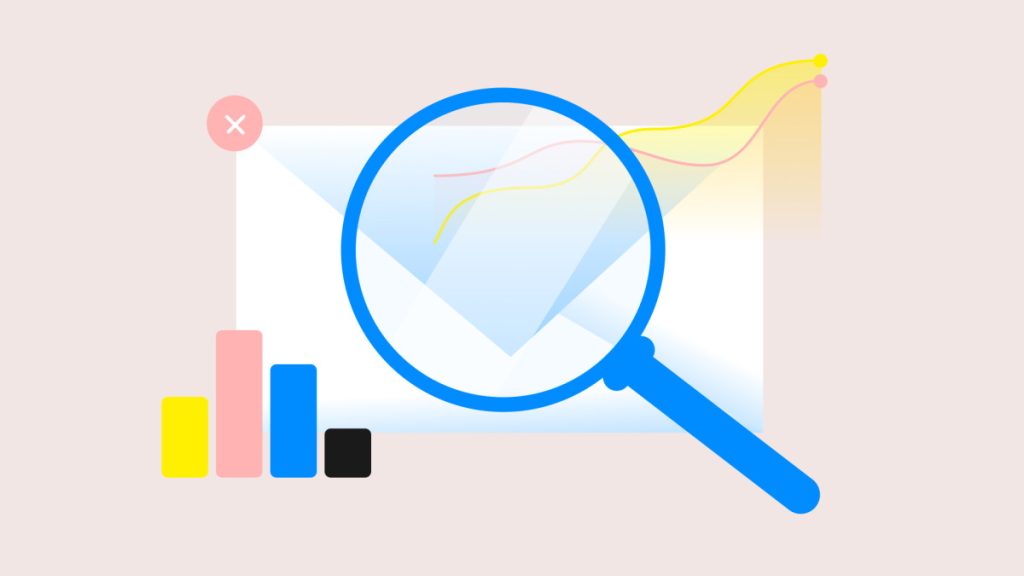20 Ways to Effectively Segment Your Event Email Marketing Data
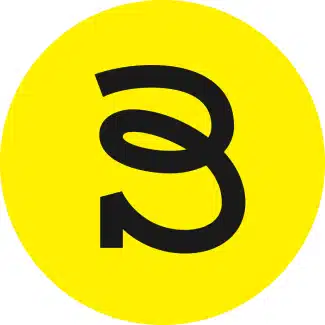
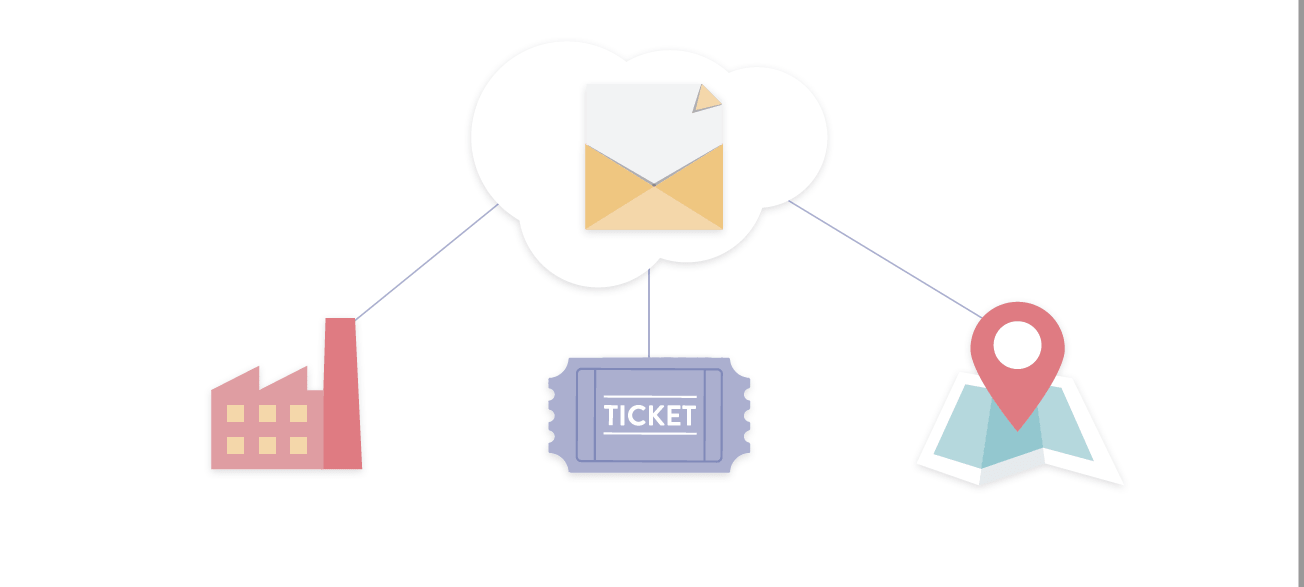
So you’ve invested in an event marketing software for your upcoming event, allowing for a much smoother and efficient planning process? Awesome! Not only that, but the rich event data that the software provides is proving to be very valuable. The question now becomes: how do you leverage that data to carry out a strong email marketing campaign?
The answer is simple: email segmentation. Classifying email recipients through different categories ensures the most relevant and personalized reading experience for the attendee. The success of your event email marketing strategy is largely dependant on how valuable the actual content is to the reader. By providing an optimal reading experience for your attendees, you are creating a positive association with your event well before the start date.
Below are 20 different ways to slice your event data to maximize the impact of your segmented email campaigns.
Before even categorizing companies by their core business or service, segment companies by their organization type. This can range from nonprofit, to enterprise, to associations, and so forth. The type of organization that company identifies itself as will be an indicator of the type of email content that will be most relevant to them.
2) Industry
Your event will most likely bring together professionals from a variety of professional backgrounds. To ensure your email content is relevant, organize campaigns based on industry. An email sent to a SaaS marketer should be tailored differently than an email sent to a financial analyst. Segmenting campaigns based on industry will let your attendees know that the event content will be specifically relevant to them, further cementing their excitement for the event.
3) Job Function
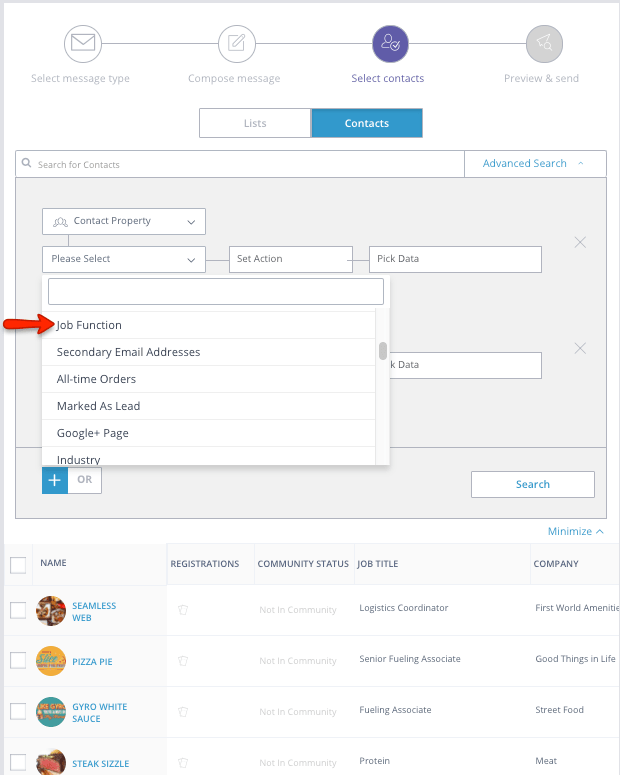
An attendee’s specific job function will largely determine the reason they registered for the event. A C-level executive will be attending the event for different reasons than a sales associate. Similar to content marketing, the information being communicated should directly address the interests of the intended recipient. Segmenting email campaigns based on job function will do just that.
4) Size of Company
One factor that largely determines the stage of a company is its size. Company size will indicate the particular needs and goals for the business and dictate the direction they hope to head towards. Certain sections of the event content may be relevant to companies of larger or smaller scale so it’s important to tailor email campaigns based on this characteristic as well.
5) Geographic Region
Location is a significant differentiator among attendees, especially if your event attracts a global audience. By sending emails specific to a person’s location, the message will be that much more personalized. Whether that means sending an email during a country’s specific holiday or crafting an email that refers to the particularly cold weather of the recipient’s location, segmenting event email marketing campaigns based on location will help to increase overall engagement levels.
6) Promo code
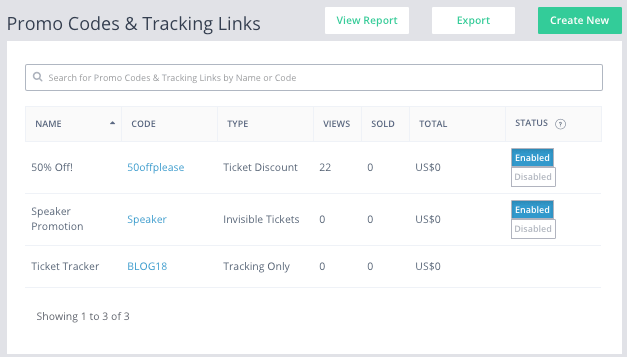
A great marketing tactic for increased registration is to endorse different promo codes. Perhaps you’d like to have a promo code for bloggers and another one for product marketers. Having different promo codes will naturally divide your attendees into different sectors. Thus, take advantage of this segmented data by sending email campaigns accordingly. Keep in mind that this is only possible if your event management software offers promo code functionality and tracking.
7) List Membership
If your event management software is a data-driven platform, you will be able to organize your contacts based on certain characteristics. These categorizations can then be organized into specific lists which you can then use for segmented email campaigns. For example, you can have lists that specify who has joined the event community before a certain date. Having lists like this readily available is a great email marketing tip to keep in mind for future campaigns.
8) Session Sign-up
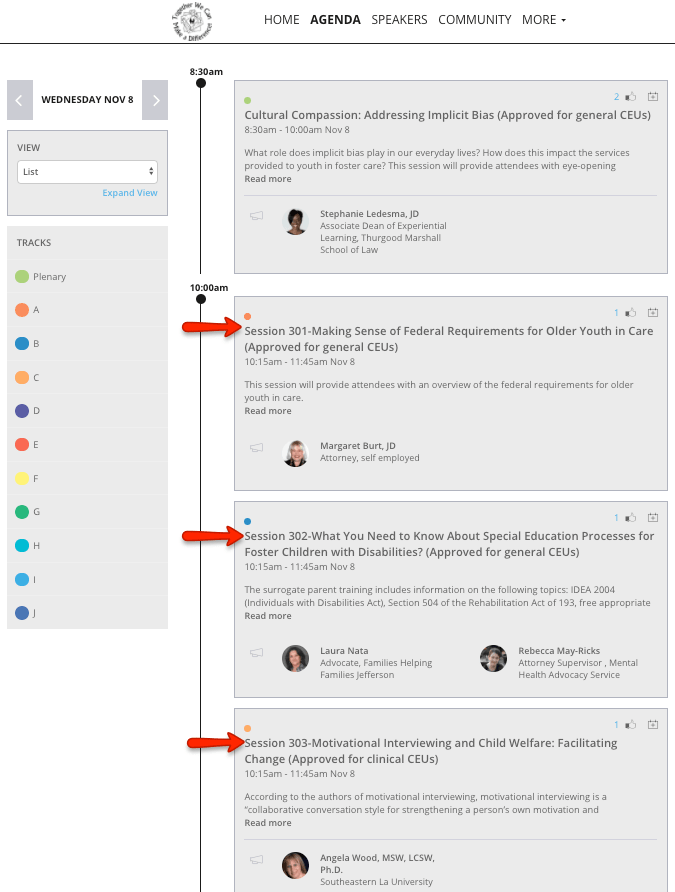
Attendees will most likely sign up for specific sessions before the event start date. Use this data to gauge the interest level of attendees and send relevant email content that reflects the session topics. This will result in a delightful experience for the attendees both before and during the event.
9) Ticket Type
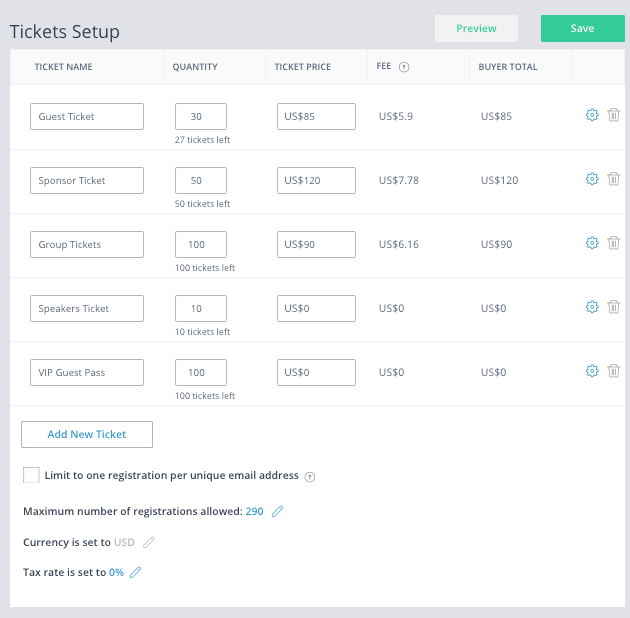
Similar to differing job functions, people will also have different roles as an attendee. Some attendees will be going to the event as sponsors, some as speakers, and others as guests. These roles are often determined by the type of ticket they purchase. Using this data, prepare email campaigns that are specific to each attendee’s role to let attendees know that this event will specifically address their needs, regardless of their role.
10) Community Join Date
Early adopters of the event app can be a good indicator of enthusiasm for the event. Once an attendee downloads the app, the will be able to join the event community through the app to start connecting with other attendees. Organize contacts based on the community join date and for those you joined early, send other promotional items for them to share to capitalize on their enthusiasm for the event.
11) Community Activity Level
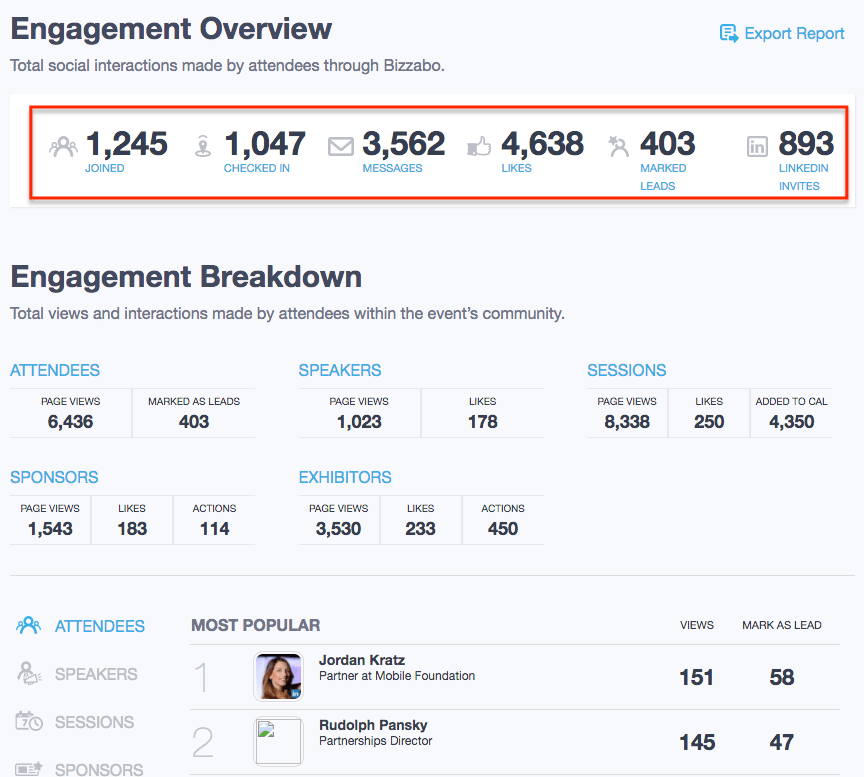
Similar to the previous tip, the level of engagement within the app is a tell-tale sign of those who are particularly excited about the event. You’ll want to identify these event advocates as early as possible to leverage their enthusiasm for organic marketing campaigns. Metrics such as number of messages sent or profiles viewed are clear indicators for their willingness to be active attendees. Using this data, you can create segmented campaigns that will leverage their enthusiasm.
12) Content Consumption Pattern
Perhaps your attendees are also subscribers to your event blog. Which blog posts have they clicked on? Which ebooks have they downloaded? By understanding how they’ve interacted with content outside of your event, you can tailor your emails accordingly. Of course this requires highly integrated event data from which you can draw these conclusions. Thus, investing in such a platform would be well worth it.
Want to learn more about making the most out of your event data? Click below for the free ebook.
13) Age
Categorizing email campaigns by age can help ensure that you are sending the most relevant email content. For example, if you are organizing an email campaign promoting post-conference social events, you’d most likely want to send nightclub events to attendees of a younger age as opposed to those who are a bit older. Of course it’s important to refrain from making ageist assumptions, but it is still possible to use age as a segmentation option to better tailor email content.
14) Conference Attendance Experience
Some of your attendees may have gone to dozens of other events. For others, your event may be their first one. Segment your emails based on conference-going experience so you’re able to properly educate attendees on how to navigate your conference and get the most out of their experience, especially if they haven’t attended many events previously.
15) Registration Stage
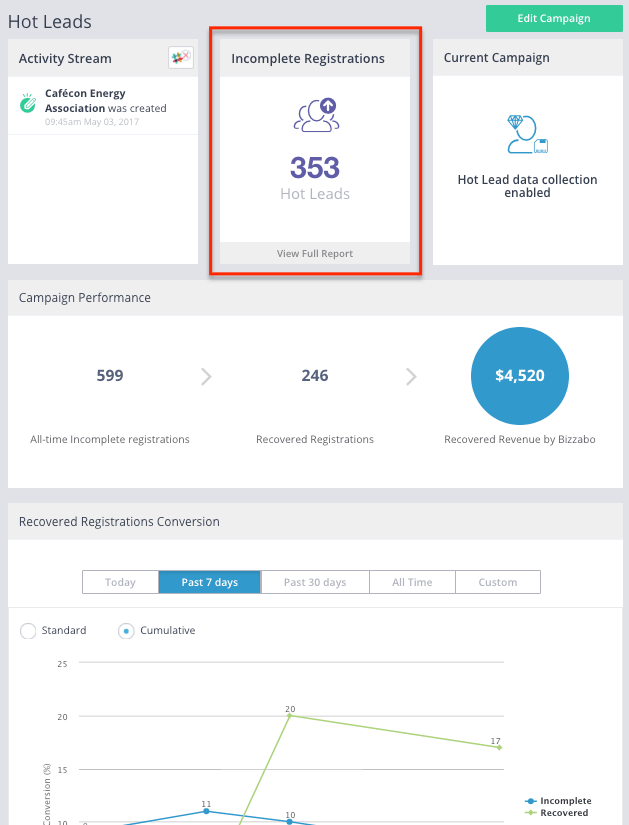
There’s a chance that some people who visit the event website will have started the registration process and then left it unfinished. These “almost-attendees” are perfect for segmented campaigns because emails directed at these attendees will either remind or encourage them to finish the event registration process.
16) Email Engagement Level
Attendees will tend to respond to your emails to a different capacity. By segmenting based on email engagement level, you can make sure to send just enough content and messages for the recipient to be satisfied. Sending weekly emails to the section of your email audience with the lowest open rate will make your emails seem spammy and that is always something you’ll want to avoid. Also, gathering this type of email engagement data will likely require event software integrations so make sure your platform provides these capabilities.
17) Net Promoter Score
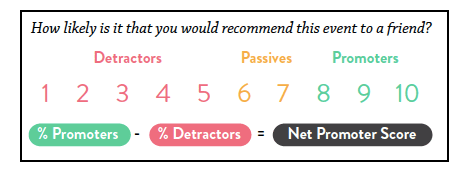 This would only be relevant if you are emailing attendees from previous events. When analyzing event data from your previous events, organize attendees by the Net Promoter Scores they gave. For those unfamiliar, NPS scores are what attendees give to grade their event experience. The breakdown of the score is illustrated in the image above. Segmenting emails by NPS scores will help you to tailor campaigns based on attendees’ reviews of pervious events.
This would only be relevant if you are emailing attendees from previous events. When analyzing event data from your previous events, organize attendees by the Net Promoter Scores they gave. For those unfamiliar, NPS scores are what attendees give to grade their event experience. The breakdown of the score is illustrated in the image above. Segmenting emails by NPS scores will help you to tailor campaigns based on attendees’ reviews of pervious events.
18) Sponsorship Tier
We’ve written about the importance of emailing potential event sponsors and the strategy behind it. Now that you’ve secured a few sponsors, the next important step is to send messages that are relevant to the sponsor. More specifically, you’ll want to craft email content that is specific to the type of sponsor. If you are organizing your sponsors by different tiers, the message you send to the bronze tier is probably different from that of the gold tier. Make sure to be mindful of this while writing out the email.
19) Event Website Activity
In the case that you are hosting your event website on an advanced platform that tracks visitor behavior in detail, use that data to organize your campaigns. If you notice that many visitors tend to consistently click on the speakers page, create an email campaign with specific speaker content. Capitalizing on your event website traffic by conducting segmented campaigns targeted active visitors is a strategy to keep in mind.
20) Survey Responses
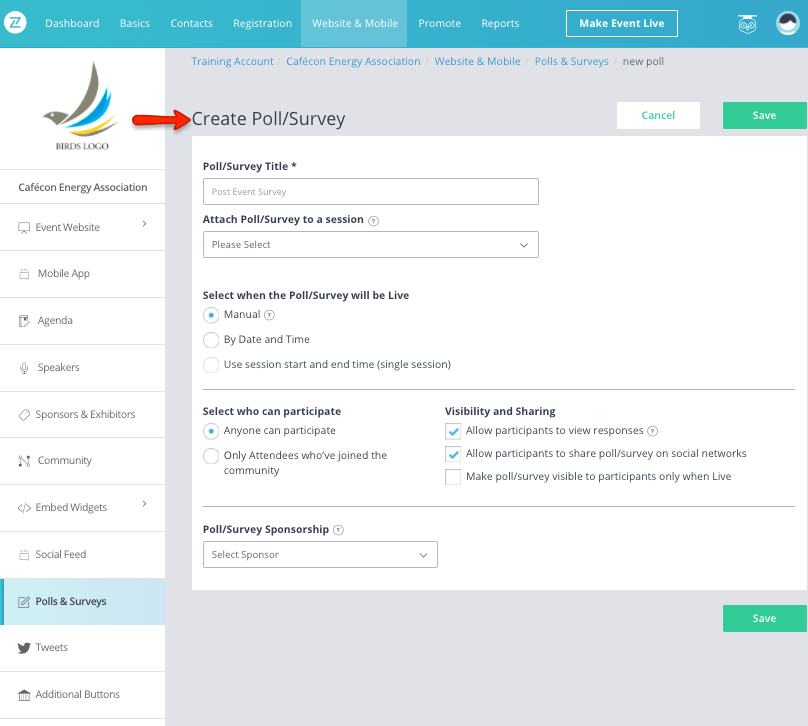
On the online registration form, include questions for attendees to fill out with multiple choice options. Depending on their answers, you can send email campaigns that directly address their responses. If 30% of attendees said that they were most looking forward to the collaborative workshops, launch an email campaign that details the benefits of each workshop. Survey and form responses will definitely come in handy.
Looking for more great event email marketing tips and tricks? Check out these email invitation examples or click the button below to discover the secret science of event email marketing.
